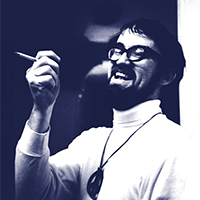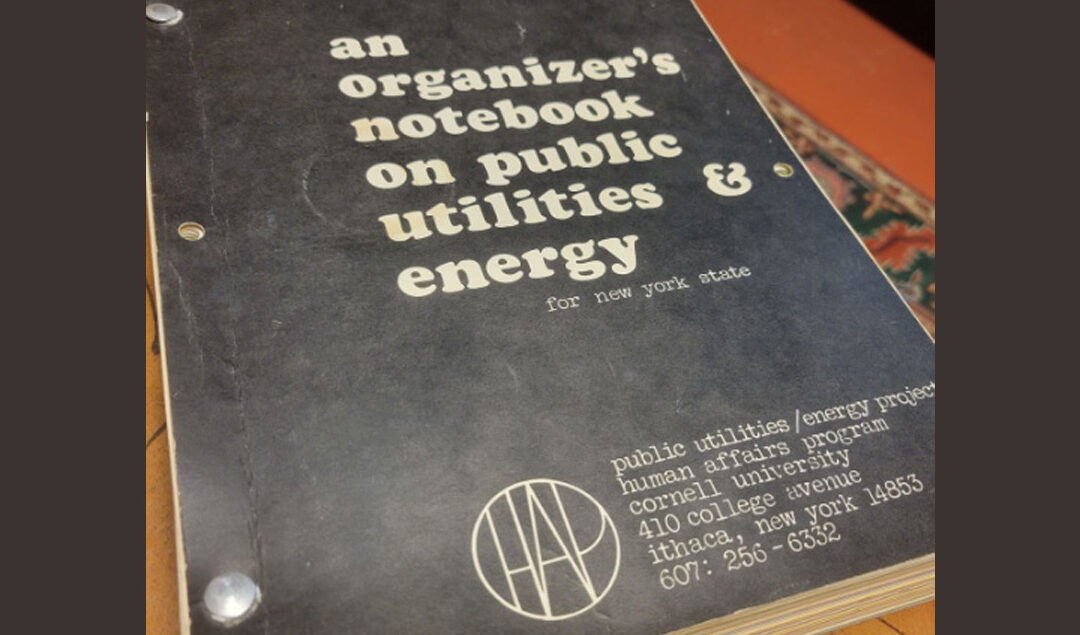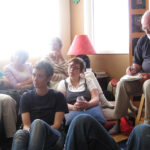Dan wrote five concise pages titled “Framework for Organizing” as part of a 500-page “Organizer’s Notebook on Public Utilities and Energy” that he produced with the Human Affairs Program he directed in Ithaca, New York in 1976. The program organized people for public ownership of utility companies, against nuclear plants, in opposition to prisons and sexual harassment of working women, and towards a Labor Action Coalition that lasted long after Dan’s departure in 1979. The Organizer’s Notebook was called the Black Bible by local organizers. As an extensive compilation of resources and research it represented an invaluable and ready tool for organizers.
The five basic factors Dan asks the reader to consider serve as a solid frame to share his ideas around organizing and the big lessons from his extraordinary work over the years as sources of his thinking and practice:
- An Irish Catholic Boy sees the world and can’t unsee it.
- Turkey, Brooklyn, and the Human Affairs Program at Cornell
- Three guidelines drive organizing: Organize to improve people’s real conditions. Organize to give people a sense of their own strength. Organize to change power relationships.” – Organizer’s Notebook on Public Utilities and Energy, 1976
2) WHAT: What kind of organization is needed?
- As quiet as it’s kept, Dan Leahy was the engine behind one of the most concerted attempts to start a third party in the United States.
- Dan served as National Secretary, National Executive Director, and on the National Executive Committee of the Citizens Party from May 1979-February 1981. In that time, he led the efforts to organize 4,000 paying members in 33 state caucuses. 300 delegates converged on Cleveland for the founding convention, and as the Citizens Party, approved a platform and gained recognition from the Federal Election Commission as a national political party.
3) WHO: Who will be a part of it?
- The Labor Education and Research Center was “the best work of his life.”
- “The Summer School for Trade Union Women that opens today did not just happen. It took a love of history, leadership, self-respect, organizing skills, argument, resources, hard work and belief. It was made possible by women and men who believe working women have always been and will continue to be a critical element in organized labor’s ability to protect and promote the interests of working people.” – from Dan’s opening remarks to 55 trade union women from 18 different unions in 1987 at the Labor Center’s first school.
4) FOR WHAT: What is the target?
- The fight to dismantle NAFTA and the work of the Trinational Coalition
- “You need to know the institution that you have chosen as your target as well as, if not better than. those who presently control it. This is often not that difficult to do because you will discover that ‘leaders’ of many institutions rule out of power and not out of knowledge. Knowing the institution makes your organization legitimate, and the institution look silly.”
5) HOW: What are the methods to win victory?
- Progress Under Democracy and organizing a ratepayers’ rebellion
- In the early 1980s, Dan organized a state-wide effort to take over Public Utility Districts (PUDs). His organization ran and won 11 out of 13 candidates in PUD Commissioner elections, and as a result, stopped four out of five nuclear plants in Washington state.



